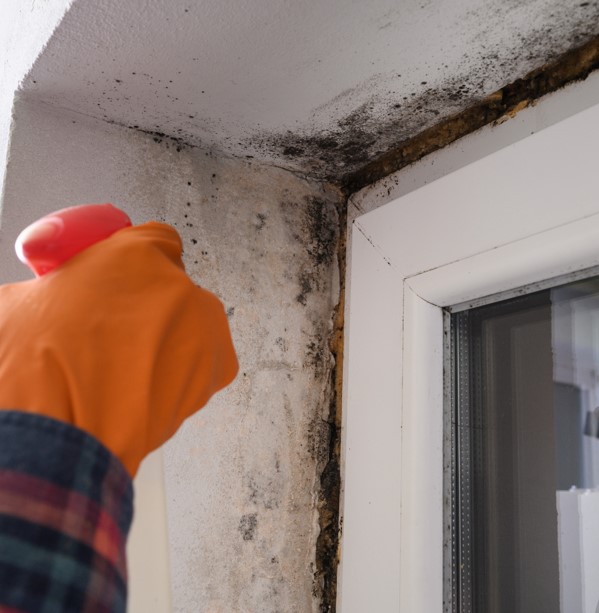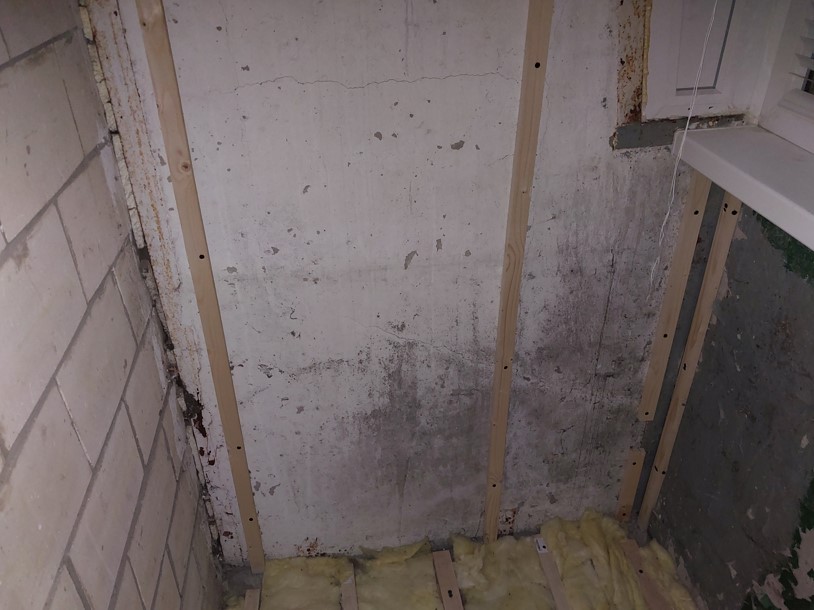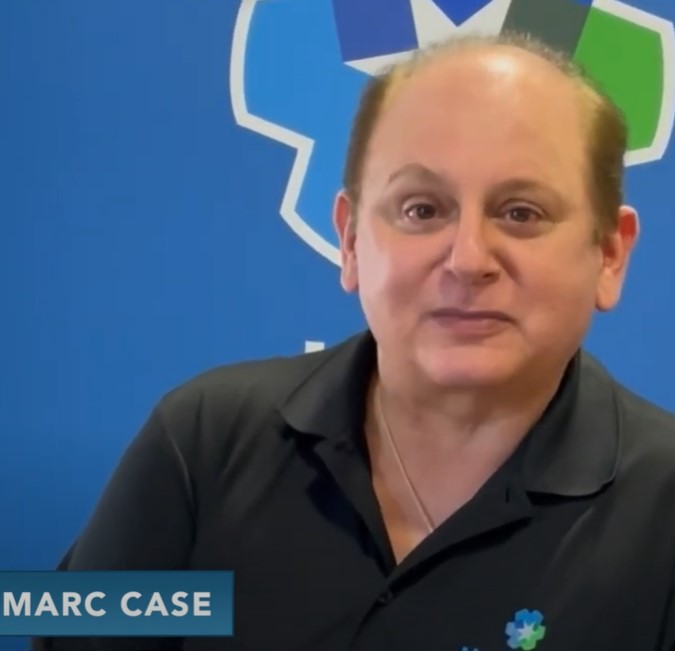
Floods can wreak havoc on homes and businesses, leaving behind not just water damage, but also a potentially hazardous problem – mold growth. The damp and moisture-rich environment created by floods provides the perfect breeding ground for mold spores to thrive, particularly on wet materials and porous surfaces.
The challenge to mold removal after floods is not just about restoring the physical aesthetics of your space, but more importantly, it’s about safeguarding health and preventing further mold growth.
Our team at Mastertech Environmental Jersey Shore specializes in mold remediation. We understand that this process can be overwhelming and requires careful attention to detail. It’s crucial to wear protective gear during the process to protect yourself from harmful mold spores. Our mold treatment is designed to not only remove existing mold but also to prevent future infestations, ensuring your home or business remains mold-free. In this blog post, we will guide you through the steps to effectively get rid of mold following a flood.
Understanding Mold Removal After Floods
Mold is a type of fungus that thrives in moist environments and reproduces by releasing tiny, airborne spores. These microscopic organisms can be found virtually everywhere, both indoors and outdoors, and come in various colors including black, white, orange, green, and purple. While everyday exposure to mold is typically harmless, issues arise when mold begins to grow indoors in large quantities.
Floods May Be A Perfect Breeding Ground For Mold
Floods create the perfect conditions for mold growth. When a flood occurs, it leaves behind standing water and saturated materials in its wake. These wet materials—especially those of a porous nature like wood, drywall, insulation, carpeting, and furniture—found in areas such as a flooded basement, provide an ideal breeding ground for mold.
Mold after a flood can begin to grow within just 24 to 48 hours, turning into a severe problem if not addressed promptly. Consequently, removing mold isn’t as straightforward as it might seem. It requires careful treatment to ensure complete eradication and prevent its return.
The Importance of Personal Protective Equipment
During the process of mold removal, it’s vital to wear personal protective equipment (PPE), including gloves, goggles, and a respirator. This equipment protects you from exposure to potentially harmful mold spores that can cause health problems. In certain cases, particularly where large areas are affected or individuals with weakened immune systems are involved, professional mold remediation may be necessary.
Covering the Cost of Mold Removal After Floods
If you’ve experienced a flood, it’s crucial to contact your insurance company as soon as possible. Many homeowner insurance policies cover the cost of mold remediation, but swift action is essential. The longer you wait, the more likely it is for mold to spread and cause further damage, potentially leading to denied claims.
Mold resulting from floods isn’t just an aesthetic issue—it’s a potential health hazard and structural risk to your home. Therefore, it’s of paramount importance to treat mold effectively and take steps to prevent future mold growth.
Health Risks and Structural Damage
Mold, particularly flood mold, poses significant risks not only to the structural integrity of your home but also to your health. Prolonged exposure to mold spores can lead to a variety of health issues, ranging from mild to severe.
Health Risks Associated with Mold Exposure
When mold grows indoors, it releases spores that can be inhaled by the inhabitants of the home. These spores can cause allergic reactions in some people, leading to symptoms such as sneezing, runny nose, red eyes, and skin rash. People with asthma or who are allergic to mold can have severe reactions, and prolonged exposure to mold can lead to more serious respiratory conditions.
For individuals with weakened immune systems, such as those undergoing cancer treatment or people with HIV/AIDS, mold spores can cause serious lung infections. That’s why it’s crucial to remove mold promptly when it starts growing inside your home.
Structural Damage Caused by Mold
Beyond the health risks, mold can also cause significant damage to your home. Mold feeds on organic materials like wood and drywall, which are common in most home structures. Over time, unchecked mold growth can weaken these materials, compromising the structural integrity of the building.
Mold can also cause irreversible damage to personal belongings and interior finishes. It can discolor surfaces, leave behind a musty odor, and even ruin furniture and clothing.
Preventing Mold Growth
Given the dangers associated with mold, prevention is key. Keeping your home dry and well-ventilated can help prevent mold growth. In the event of a flood, it’s important to dry out affected areas and belongings as quickly as possible, ideally within 24 to 48 hours.
Remember, removing mold is not just about improving the aesthetics of your home. It’s about protecting your health and maintaining the structural integrity of your home. If you’re dealing with a serious mold problem, it’s advisable to call in professionals who specialize in mold remediation.
Professional Inspection For Identifying Mold
Recognizing mold in your home is the first step towards maintaining a healthy, safe environment. Mold can often be identified by its appearance, smell, and the physical symptoms it may cause. However, in the aftermath of events like a flood, professional inspection becomes particularly crucial.
Recognizing Mold in Your Home
Mold comes in various colors, including black, white, green, orange, and purple, and it often appears as a stain or discoloration on walls, ceilings, furniture, or fabrics. It can also grow behind wallpaper or underneath carpets, making it less visible.

Another sign of mold is a musty, damp odor. If certain areas of your home consistently smell musty or damp, there’s a good chance that mold is present.
Physical symptoms can also indicate the presence of mold. If you or your family members are experiencing persistent allergy-like symptoms such as sneezing, coughing, runny nose, or itchy eyes, especially when at home, this could be a sign of mold exposure.
The Importance of Professional Mold Inspection And Mold Removal After Floods
While recognizing mold can be straightforward in some cases, it can be challenging to identify and accurately assess the extent of mold growth after a flood. Floodwater can seep into hidden corners and crevices of your home, allowing mold to grow in places that are difficult to see or reach.
In these situations, engaging the services of a professional mold inspection and remediation company, like Mastertech Environmental Jersey Shore, can prove invaluable. Specializing in mold remediation, water damage, and biohazard cleanup, companies like these have the expertise to thoroughly inspect your property, identify all areas of mold growth, and implement an effective remediation process designed to keep your home or business mold-free.
Their services don’t stop at mold identification and removal. They also handle water damage restoration and biohazard cleanup, ensuring that your home is safe and healthy following any kind of disaster. Moreover, they understand that situations like these are sensitive and require a compassionate and professional approach.
Taking Care Of Mold Caused By Flooding
Mold growth poses serious health risks and significant damage to your property, making its swift identification and remediation critical. Particularly following events like floods, enlisting the help of experienced professionals like Mastertech Environmental Jersey Shore can be invaluable in safeguarding your home and health.
Beyond mold remediation, these experts can also restore water damage and handle biohazard cleanup, ensuring your dwelling is safe, clean, and healthy in the wake of any disaster. Remember, prevention is just as crucial as treatment, so maintaining a dry, well-ventilated environment can greatly reduce the chances of mold infestation.

